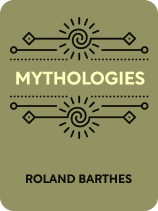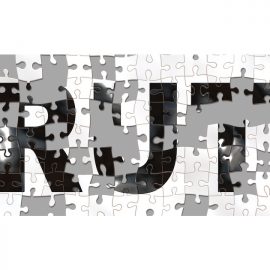

This article is an excerpt from the Shortform book guide to "Mythologies" by Roland Barthes. Shortform has the world's best summaries and analyses of books you should be reading.
Like this article? Sign up for a free trial here.
What makes myths powerful? What’s the relationship between myth and meaning?
Roland Barthes says that the images, objects, and stories we’re confronted with throughout the day are myths that contain subtle messages that subconsciously shape the way we view the world. He discusses the two basic elements of myth: form and concept.
Read more to understand these basics of myth that inform how it’s used to shape society.
Elements of Myth
Barthes argues that there are two basic, interrelated elements of myth: a form and a concept. The form of a myth is concrete: It is the actual object, image, or phrase that we perceive with our senses. Anything can become the form, or raw material, of a myth—it could be a song, a photo, or an everyday object such as a car or an article of clothing.
Barthes explains that, on their own, these materials have a literal meaning. When we see a car, we recognize it as a vehicle of transportation. When we listen to a song, we understand its words. However, the power of myth is that it imbues these things with additional meaning. Myth occurs when society connects the raw material of form to an abstract concept.
As an example, consider a fictional political candidate. At rallies, she always plays a specific song as she walks onto the stage to get the crowd excited. Over time, voters begin to associate the song with the candidate: her supporters play it at marches and her opponents stop listening to it. The song comes to represent the candidate’s particular brand of politics (for example, nationalism). When the candidate pairs the song with these abstract concepts, the song becomes the material for a myth. It is no longer just a song but also a political message.
Barthes suggests also that myth doesn’t just add new meaning to the raw material—it also distorts the original meaning. In our example of the political candidate, the song itself has a set of meanings, including the meaning of the words and the melody, the history of the artist, and the historical context. These original meanings help create the myth. For example, perhaps the song already had nationalist undertones, making it an ideal choice for this candidate’s campaign.
However, once the candidate co-opts the song for her campaign, the purpose of the song changes. Its primary function is no longer to be a complex piece of music with its own words, melodies, and historical context. Rather, the song becomes a tool for the candidate to convey a particular political message. In this way, while the original meanings do not disappear entirely, they recede into the secondary role of supporting the myth.
According to Barthes, this receding of the form’s meaning is important because it allows myth to appear perfectly natural. In other words, it hides the fact that the relationship between the form and the concept is a construction. In the following section, we’ll discuss how this works.
| The Form, Concept, and Myth of Nude Paintings In Berger’s Ways of Seeing, nude portraits of European culture serve as a historical example of this dynamic between form and concept. In this case, oil paintings of nude women were used as status symbols by wealthy men. The form is the painting—an image of a nude woman. The concept is the objectification and ownership of the woman’s body by the man. By capturing the woman in the painting, she becomes an “object” meant to serve the man’s desires. And the myth created by this form and concept is the reinforcement of the man’s social status—it serves as a reminder to the man and others that he is wealthy and powerful enough to have this woman on display for his (and others’) objectifying gaze. |

———End of Preview———
Like what you just read? Read the rest of the world's best book summary and analysis of Roland Barthes's "Mythologies" at Shortform.
Here's what you'll find in our full Mythologies summary:
- The subtle messages that subconsciously shape the way we view the world
- How myths are used to reinforce cultural norms and values
- Why myths can pose dangers to society






